Verticillium Wilt Treatment: What Is Verticillium Wilt And How To Fix It
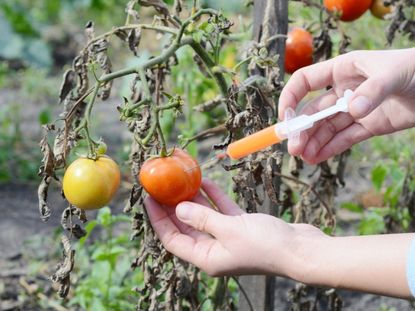

Leaves that curl, wilt, discolor, and die may mean that a plant is suffering from verticillium wilt. You may first notice these symptoms in spring or fall when temperatures are mild. Read on to find out how to distinguish verticillium wilt from other plant diseases and what to do about it.
What is Verticillium Wilt?
Verticillium wilt is a fungal disease that lives in the soil. It invades susceptible plants through their roots and spreads through the plant's vascular system. The list of plants affected by verticillium wilt is extensive and includes trees, shrubs, garden annuals, and perennials. It can also affect fruit and vegetable crops. Verticillium wilt symptoms mimic those of other plant diseases and environmental problems, making it harder to diagnose. The leaves wilt and curl and turn yellow or red. They eventually turn brown and drop off. Stems and branches die back. It's not unusual to see these symptoms on one side of the plant while the other side appears unaffected. As the disease travels up a tree or shrub's vascular system, it leaves dark discolorations. If you peel back the bark, you'll see dark streaks on the wood. If you cut through a branch and look at the cross section, you'll see rings of dark color. These discolorations in the wood can help you tell the difference between verticillium wilt and other plant diseases.
Control of Verticillium Wilt
Verticillium wilt can't be cured once it enters the plant. It's best to remove and destroy small, easily replaced plants. The disease remains in the soil after you remove the plant, so don't plant another susceptible species in the same area. Verticillium wilt treatment for trees and shrubs focuses on giving the plant the best possible care to build up its resistance. Water the plant regularly, and when possible, provide afternoon shade. Fertilize on schedule, using a low-nitrogen, high-phosphorus fertilizer. Prune off dead and dying branches. You can often get rid of the verticillium wilt fungus in the soil by solarization. Soil solarization heats up the top 6 inches (15 cm.) or so of soil to temperatures high enough to kill the fungus. Prepare the soil by tilling or digging and then wetting it down. Cover the area with a clear plastic tarp and bury the edges under a few inches (8 cm.) of soil to hold it in place and keep the heat in. It takes three to five weeks of bright sunlight and warm temperatures for the soil to heat up enough to kill the fungus. Verticillium wilt is a devastating and incurable disease, but with special care and attention, you can preserve the plant and enjoy it for several more years.
Gardening tips, videos, info and more delivered right to your inbox!
Sign up for the Gardening Know How newsletter today and receive a free download of our DIY eBook "Bring Your Garden Indoors: 13 DIY Projects For Fall And Winter".

Jackie Carroll has written over 500 articles for Gardening Know How on a wide range of topics.
- Amy DraissDigital Community Manager
-
 Elegant Exotics: 8 Beautiful Amaryllis Varieties That Will Brighten Any Holiday Display
Elegant Exotics: 8 Beautiful Amaryllis Varieties That Will Brighten Any Holiday DisplayWhether red, pink, white or variegated, the right amaryllis varieties can enhance any living space, especially during the holidays. We round up eight of the most exquisite
By Bonnie L. Grant
-
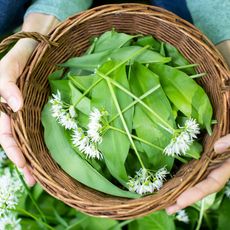 Forage For Herbs: 7 Tasty And Safe Wild Herbs To Pick Close To Your Own Backyard
Forage For Herbs: 7 Tasty And Safe Wild Herbs To Pick Close To Your Own BackyardIn addition to growing your own herbal staples, did you know there are several wild options out there that are safe and tasty – and free? Try foraging these 7 wild herbs
By Amy Grant
-
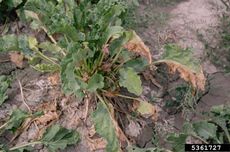 Fusarium Wilt Disease: Tips For Controlling Fusarium Wilt On Plants
Fusarium Wilt Disease: Tips For Controlling Fusarium Wilt On PlantsThere is a fungus among us and its name is Fusarium. Fusarium fungus can survive indefinitely, affecting any crop or plant that is contaminated by the soil. Find out how to protect and treat your plants in this article.
By Bonnie L. Grant
-
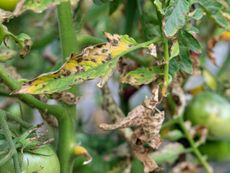 Blight Treatment - Symptoms And Control Of Southern Blight On Plants
Blight Treatment - Symptoms And Control Of Southern Blight On PlantsIt happens to the best of us - all your healthy plants wilting and dying. Southern blight on plants is a common problem in many home gardens but it doesn?t have to be. This article will help.
By Jackie Carroll
-
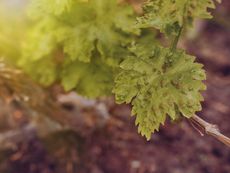 Anthracnose Disease Info And Control - What Plants Get Anthracnose
Anthracnose Disease Info And Control - What Plants Get AnthracnoseYou may know it as leaf, shoot or twig blight. Combating anthracnose can be a frustrating process so knowing more about what plants get anthracnose and how to prevent it is helpful. Get that info here in this article.
By Susan Patterson